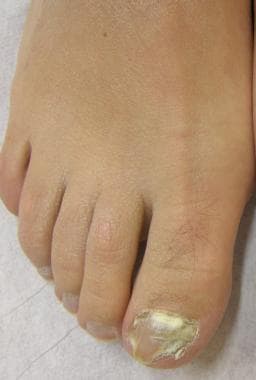Not known Details About Treatment of Onychomycosis in Diabetic Patients - Clinical

Some Of Progression and Recurrence of Onychomycosis
Old shoes might harbor a high density of spores and, if possible, should not be used.
Medical condition, Onychomycosis, Other names, Dermatophytic onychomycosis tinea unguium, A toenail impacted by onychomycosis, White or yellow nail discoloration, thickening of the nail, Lower leg cellulitisNormal start, Older males, Causes, Fungal infectionAthlete's foot, other nail diseases, direct exposure to somebody with the condition, peripheral vascular disease, poor immune functionBased on appearance, validated by laboratory screeningPsoriasis, chronic dermatitis, persistent paronychia, nail trauma, Treatment, None, anti-fungal medication, cutting the nailsTerbinafine, ciclopiroxFrequently recurs, Frequency10% of adults Onychomycosis, also referred to as tinea unguium, is a fungal infection of the nail.

How to effectively use Lamisil when treating fungal nail infections- MyFootShop.com
About Onychomycosis - Nail Infection - Signs, Symptoms, Treatment
Toenails or fingernails might be affected, but it is more typical for toenails to be impacted. Official Info Here might consist of cellulitis of the lower leg. A number of various kinds of fungi can cause onychomycosis, including dermatophytes and. Threat factors consist of athlete's foot, other nail diseases, exposure to somebody with the condition, peripheral vascular illness, and bad immune function.

Onychomycosis - Dermatologic Disorders - Merck Manuals Professional Edition
Onychomycosis does not necessarily need treatment. The antifungal medication terbinafine taken by mouth seems the most effective but is associated with liver issues. Trimming the affected nails when on treatment also appears helpful. There is a ciclopirox-consisting of nail polish, however there is no proof that it works. The condition returns in up to half of cases following treatment.
How Systemic Therapy of Onychomycosis - SpringerLink can Save You Time, Stress, and Money.

It occurs in about 10 percent of the adult population. Older people are more regularly affected. Males are impacted more frequently than females. Onychomycosis represents about half of nail disease. It was very first determined to be the result of a fungal infection in 1853 by Georg Meissner. Etymology [modify] The term is from Ancient Greek 'nail', 'fungus', and the suffix - 'practical illness'.
As the infection progresses the nail can end up being breakable, with pieces breaking off or leaving from the toe or finger totally. If left neglected, the skin below and around the nail can become irritated and unpleasant. There may likewise be white or yellow spots on the nailbed or flaky skin next to the nail, and a nasty smell.
